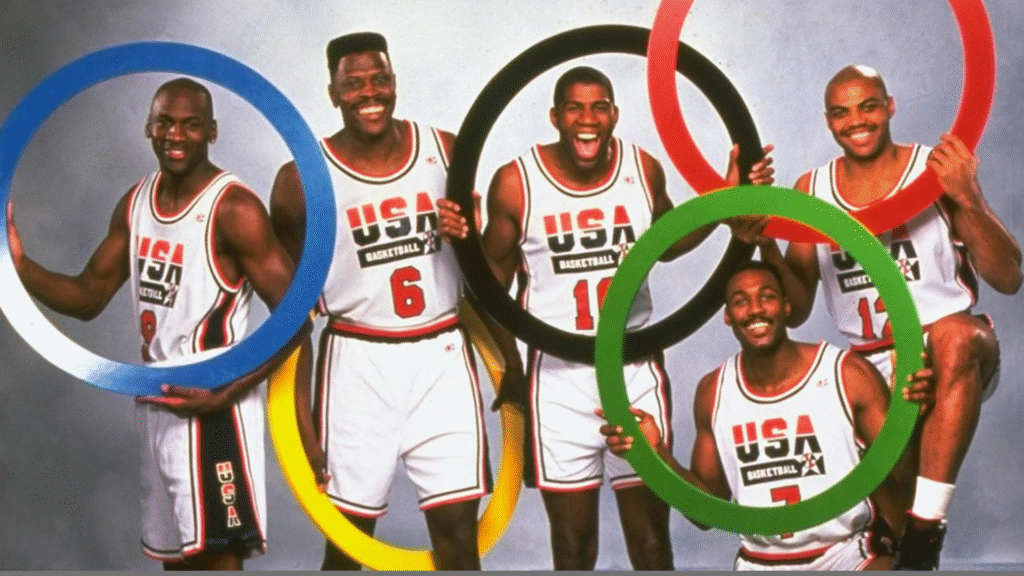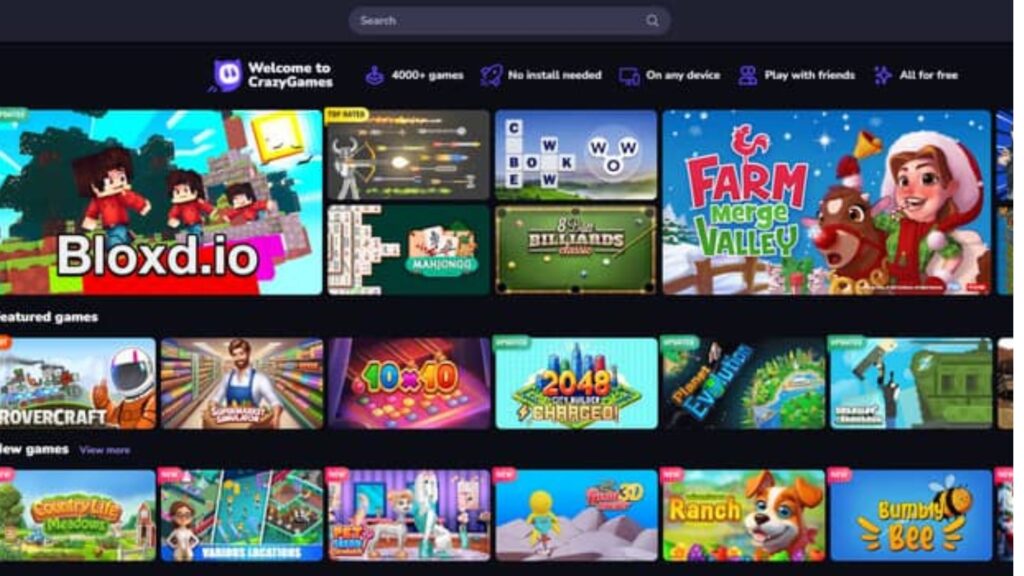Sports
United States at the Olympics: Medal History, Rankings, and Achievements
Introduction
The United States of America (USA) has been one of the most dominant nations in the history of the Olympic Games. Since its first participation in Athens 1896, Team USA has consistently ranked among the top medal-winning countries, producing legendary athletes and unforgettable moments. From track and field to swimming, gymnastics to basketball, American athletes have showcased their strength, skill, and perseverance across both Summer and Winter Olympics.
In this article, we’ll take a deep dive into the Olympic medal history of the United States, its ranking among global competitors, iconic athletes, and the factors behind its unmatched success.

Early History of the United States at the Olympics
The United States first participated in the 1896 Athens Olympics, the inaugural modern Games. Despite sending just 14 athletes, the American team managed to win 11 medals, including 9 golds. This early success set the tone for future dominance.
Key highlights of the early years:
- In 1900 Paris Olympics, the USA improved its tally, especially in track and field.
- By 1904, when St. Louis hosted the Olympics, the USA completely dominated with 239 medals, though many were won in events with mostly American participants.
- Throughout the early 20th century, American athletes became household names—most notably Jim Thorpe, who won the decathlon and pentathlon in 1912.
Medal Tally Overview
The USA has an unparalleled record in Olympic history. As of the 2024 Paris Olympics, here’s the updated medal tally:
- Total Olympic Medals (Summer + Winter): Over 3,100
- Summer Olympics: ~2,700 medals
- Winter Olympics: ~330 medals
The USA has led the medal count in 18 Summer Games and 1 Winter Games.
Medal Breakdown (Approximate)
- Gold: 1,200+
- Silver: 950+
- Bronze: 850+
No other nation comes close to this record.
The Summer Olympics: America’s Stronghold
The Summer Olympics have always been the main stage for American dominance. The country has consistently topped medal tables, thanks to its world-class athletes, advanced training systems, and strong sports culture.
Athletics (Track & Field)
Athletics has been America’s pride. From Carl Lewis to Florence Griffith-Joyner, and more recently Allyson Felix and Sydney McLaughlin-Levrone, U.S. athletes have redefined sprinting, jumping, and throwing events.
- The USA has won over 800 medals in athletics, making it the most successful sport for the nation.
Swimming
Swimming is another medal-rich discipline for the USA.

- Michael Phelps, the most decorated Olympian in history, won 28 medals (23 golds).
- Other legends like Mark Spitz, Ryan Lochte, and Katie Ledecky have also carried the torch.
- The USA has earned more than 550 swimming medals, far surpassing any other nation.
Gymnastics
American gymnastics rose to prominence in the 1980s and 1990s, with stars like Mary Lou Retton, Simone Biles, and Nastia Liukin.
- Simone Biles is often regarded as the greatest gymnast of all time, with her combination of medals, groundbreaking moves, and longevity.
Basketball & Team Sports
- The USA men’s basketball team, known as the “Dream Team” since 1992, has dominated the sport, losing very few matches in Olympic history.
- Women’s basketball is equally successful, with multiple consecutive gold medals.
- Soccer, volleyball, and softball have also seen American triumphs.
The Winter Olympics: A Growing Legacy
While the United States is more famous for its Summer Olympics dominance, it has also made its mark in the Winter Olympics.
- The USA has won over 330 medals in Winter Games, ranking among the top nations.
- Success has come in snowboarding, figure skating, alpine skiing, and ice hockey.
Key Moments
- The “Miracle on Ice” at Lake Placid 1980, when the U.S. men’s hockey team defeated the Soviet Union, remains one of the most iconic Olympic moments.
- Snowboarding legends like Shaun White and Chloe Kim have brought modern-day stardom to the Winter Games.
Greatest American Olympians
The USA has produced countless legendary athletes, but some stand above the rest:
- Michael Phelps (Swimming): 28 medals, 23 golds – the most successful Olympian in history.
- Simone Biles (Gymnastics): Widely regarded as the greatest gymnast, with multiple medals and revolutionary skills.
- Carl Lewis (Athletics): 9 Olympic golds across four Games (1984–1996).
- Allyson Felix (Athletics): The most decorated female track athlete with 11 medals.
- Mark Spitz (Swimming): 9 gold medals, including 7 in one Olympics (1972).
- Shaun White (Snowboarding): Three-time Olympic gold medalist and a pioneer in snowboarding.
Why Is the USA So Successful at the Olympics?
Several factors explain America’s consistent dominance:

- Strong Sports Infrastructure : Colleges, universities, and clubs act as breeding grounds for athletes.
- Investment in Training : State-of-the-art facilities and scientific coaching give U.S. athletes a competitive edge.
- Diverse Talent Pool : With a population of over 330 million, the country has a vast pool of talent across multiple disciplines.
- Cultural Importance of Sports : Sports are deeply ingrained in American culture, making Olympic participation a source of pride.
- Professional Leagues Influence : The presence of world-class leagues like the NBA, NFL, MLB, and NHL develops athletes who often transition into Olympic sports.
Medal Ranking Compared to Other Nations
The USA leads the all-time medal standings by a wide margin.
- United States : 3,100+ medals
- Soviet Union/Russia : ~1,500 medals
- Germany (combined East & West) : ~1,350 medals
- Great Britain : ~900 medals
- France : ~750 medals
This dominance reflects the USA’s consistent performance for over a century.
Challenges and Future Outlook
Despite success, the USA faces increasing competition:
- China has emerged as a major force, particularly in gymnastics, diving, and weightlifting.
- Japan and Australia continue to excel in swimming and judo.
- In the Winter Olympics, European nations like Norway and Germany often outperform the U.S. in skiing and biathlon.
Looking ahead, the USA is preparing to host the 2028 Los Angeles Olympics, which is expected to further boost its medal count.
FAQs about USA at the Olympics
Q1: How many Olympic medals has the USA won in total?
As of Paris 2024, the USA has won over 3,100 Olympic medals, the highest of any country.
Q2: Who is the most decorated American Olympian?
Michael Phelps, with 28 medals (23 golds).
Q3: Which sport gives the USA the most medals?
Athletics (track & field), followed closely by swimming.
Q4: Has the USA ever missed the Olympics?
Yes, the USA boycotted the 1980 Moscow Olympics in protest of the Soviet invasion of Afghanistan.
Q5: When will the USA host the Olympics again?
The USA will host the 2028 Summer Olympics in Los Angeles.
Conclusion
The story of the United States at the Olympics is one of dominance, resilience, and continuous excellence. From the first Games in 1896 to the modern era, Team USA has not only collected the most medals in Olympic history but also inspired generations worldwide.
With a powerful combination of world-class athletes, infrastructure, and cultural passion for sports, the United States remains a global leader in the Olympics. As the nation looks forward to hosting the 2028 Games, the legacy of American Olympic success is set to grow even stronger.
Sports
Importance of Sports in Student Life

1. Introduction: Why Sports Matter in a Student’s Life
Student life is the most important phase of a person’s journey. It lays the foundation for personality, future career, behavior, and life skills. Most people believe that education is limited to books, exams, and grades, but in reality, education is incomplete without physical activities and sports. Importance of Sports in student life help in developing a balance between body and mind, which is often ignored in today’s highly competitive academic environment.
With increasing use of gadgets, online classes, and pressure to score high marks, students are becoming physically inactive and mentally stressed. In this situation, sports are not just entertainment or a hobby; they are a necessity. Sports make students physically strong, mentally sharp, emotionally balanced, and socially active. They help students grow into confident and responsible adults.
2. Historical Importance of Sports
Sports have been an important part of human civilization since ancient times. In Ancient Greece, sports like wrestling, chariot racing, and discus throw were included in the Olympic Games to promote strength and honor. In India, traditional sports like kabaddi, kushti (wrestling), archery, and kho-kho have been played for centuries. Kings and warriors practiced sports to stay fit for battle.
Even today, many schools and universities across the world include sports in their curriculum because it is proven to improve physical health and mental development. Sports also create a sense of community and national pride. For example, when a country wins a gold medal in the Olympics or a World Cup, it becomes a moment of happiness and unity.

3. Physical Benefits of Sports for Students
3.1 Improved Fitness and Strength
Regular participation in sports helps students develop stronger muscles and bones. Running, swimming, football, cricket, basketball, or even simple exercises like skipping and jogging improve stamina and flexibility. Students become active instead of lazy or tired.
3.2 Boosts Immunity
Sports increase blood circulation and help the body fight diseases. Students who play sports regularly fall sick less often because their immune system becomes stronger.
3.3 Helps in Maintaining Weight
Due to junk food and lack of physical activity, many students face obesity. Sports help burn extra calories, prevent obesity, and reduce the risk of lifestyle-related diseases such as diabetes and high blood pressure.
3.4 Enhances Motor Skills and Coordination
Sports like badminton, table tennis, and basketball improve hand-eye coordination and reflexes. Students become more alert and quick in their actions.
4. Mental and Emotional Benefits of Sports
4.1 Stress Relief
Sports are one of the best ways to fight stress and anxiety. When students play, their brain releases endorphins, known as “happy hormones,” which improve mood and reduce depression.
4.2 Better Concentration and Memory
Physical activities increase blood flow to the brain, which improves memory, thinking ability, and focus. Studies have shown that students who play sports regularly perform better in exams.
4.3 Builds Confidence and Self-Esteem
Winning a match or learning a new skill gives students a sense of achievement. They start believing in themselves, which is important for success in life.
4.4 Teaches Emotional Control
Sports teach students to accept both victory and defeat gracefully. They learn not to give up after failure and to stay humble after success.
5. Social Development Through Sports
5.1 Teamwork and Cooperation
Most sports are played in teams. This teaches students to work together, help each other, and achieve a common goal instead of thinking only about themselves.
5.2 Leadership Skills
Becoming a team captain or taking responsibility during a game helps students develop leadership qualities. They learn how to guide others and make decisions under pressure.
5.3 Discipline and Time Management
Sports require students to follow rules, maintain timing, attend training sessions, and balance studies with sports. This discipline becomes a part of their life.
5.4 Respect and Sportsmanship
Sports teach respect for teammates, opponents, coaches, and rules. Students learn to play fair, avoid cheating, and accept the result with dignity.
6. Role of Sports in Academic Performance
Many parents believe that sports may distract students from studies. However, this is a misunderstanding. Research shows that students who are involved in sports are often more focused, disciplined, and perform better in academics. Here’s why:
- Sports refresh the mind and improve concentration.
- Physical activities reduce fatigue and increase energy.
- A healthy body supports a healthy mind.
- Sports teach goal-setting and planning, which helps in studies.
Therefore, sports should not be seen as opposite to education but as a part of it.

7. Sports and Career Opportunities
In modern times, sports are not just for fun they offer a wide range of career opportunities. Students who are passionate and talented in sports can build a successful career in many fields such as:
- Professional athlete or player (cricketer, footballer, runner, etc.)
- Sports coach or trainer
- Physical education (PE) teacher
- Sports journalist or commentator
- Sports physiotherapist
- Fitness trainer or gym instructor
- Sports management and event organizer
- Referee or umpire
With the right training and support, students can make a bright future in sports just like in medicine, engineering, or business.
8. Role of Schools and Parents in Encouraging Sports
8.1 Schools Should Provide Facilities
Schools must have proper playgrounds, sports equipment, coaches, and regular sports periods. Sports Day, inter-school competitions, and sports clubs help students stay motivated.
8.2 Parents Should Give Support
Parents should encourage their children to participate in sports instead of focusing only on grades. They should understand that sports help children become strong, confident, and successful in life.
8.3 Balanced Routine
A balance between studies and sports is important. Students should make a timetable that includes time for both learning and playing.
9. Challenges Faced by Students in Sports
Despite the benefits, students face many challenges when trying to participate in sports:
- Lack of playgrounds and facilities in schools
- Pressure from parents to focus only on studies
- Excessive use of mobile phones and video games
- Fear of injury or failure
- Lack of professional coaching
To overcome these problems, awareness and encouragement from teachers, parents, and society are necessary.
10. Real-Life Examples and Inspiration
Many famous personalities started as students with a passion for sports. They worked hard and became legends:
- Sachin Tendulkar started playing cricket as a child and became one of the greatest batsmen in history.
- Mary Kom, an Indian boxer, faced many challenges but became a world champion.
- Lionel Messi and Cristiano Ronaldo started playing football at a young age and became global icons.
- PV Sindhu and Neeraj Chopra from India proved that with dedication, students can achieve international success in sports.
These examples inspire students to believe in their dreams.
11. Conclusion
Sports are not just a physical activity; they are a way of life. They help students stay fit, think clearly, act responsibly, and live happily. Sports build qualities such as confidence, leadership, discipline, respect, and teamwork qualities that textbooks alone cannot teach.
Therefore, sports should be given equal importance as academics in student life. Schools must create opportunities, and parents should encourage participation. A student who plays sports grows not only stronger in body but also wiser in mind and richer in character.
Frequently Asked Questions (FAQs)
1. Why are sports important in student life?
Sports help students stay physically fit, mentally active, socially confident, and emotionally balanced. They develop qualities like teamwork, discipline, leadership, and time management.
2. Do sports affect academic performance?
No. In fact, sports improve academic performance by increasing concentration, memory, and mental alertness. Students who play regularly are more focused and disciplined in their studies.
3. Can sports be a career option for students?
Yes. Students can choose careers like professional athlete, coach, sports journalist, physiotherapist, fitness trainer, or sports manager.
4. How much time should a student give to sports daily?
At least 30–60 minutes of physical activity or sports every day is essential for a student’s physical and mental well-being.
5. What values do students learn from sports?
They learn teamwork, discipline, respect, patience, handling success and failure, leadership, and sportsman spirit.
Sports
Skateboarding in the Olympics: A Complete Guide

Introduction
Skateboarding, once considered an underground street culture, has risen to the world’s biggest stage the Olympic Games. Its inclusion represents not only recognition of the sport’s athletic complexity but also a celebration of creativity, individuality, and youth culture. For skateboarders and fans alike, seeing athletes perform tricks on rails, ramps, and bowls under the Olympic spotlight is nothing short of historic. This article explores the history, events, rules, and future of skateboarding in the Olympics, along with key athletes who have left their mark.
The History of Skateboarding as a Sport
Skateboarding was born in the 1950s in California when surfers sought a way to practice on land. Early boards were made from wooden planks with roller-skate wheels, and the sport quickly spread among young people. By the 1970s, skateboarding competitions and skateparks emerged, shaping the sport into a recognized athletic pursuit.
Over the decades, skateboarding evolved from a countercultural movement into a global phenomenon. X Games in the 1990s further popularized it, showcasing daring tricks and inspiring new generations of skaters. This growth laid the foundation for skateboarding to earn its place in the Olympic Games.
Skateboarding’s Journey to the Olympic Games
The International Olympic Committee (IOC) first considered skateboarding for the Tokyo 2020 Olympics as part of a plan to appeal to younger audiences. It was officially approved in 2016, and skateboarding made its Olympic debut in Tokyo 2020 (held in 2021 due to the pandemic).
This milestone was significant because it marked the transition of skateboarding from streets and skateparks into a regulated, judged, and globally recognized sport. Its Olympic debut was widely celebrated by skaters and fans, though some purists worried about the commercialization of skateboarding’s free-spirited culture.
Olympic Skateboarding Events Explained
Skateboarding features two main disciplines in the Olympic Games: Street and Park.

1. Street Skateboarding
- Skaters perform tricks on a course designed to mimic a real street environment.
- Obstacles include rails, stairs, benches, and ledges.
- Judges score based on difficulty, execution, originality, and style.
- Each athlete performs runs and individual tricks to accumulate points.
2. Park Skateboarding
- Skaters ride in a bowl-shaped course with steep sides, ramps, and curves.
- Focus is on flow, speed, height, and creativity of tricks.
- Athletes string together a variety of tricks in a continuous run.
- Judges consider amplitude (height), difficulty, execution, and overall style.
Both events require not only technical skill but also artistry and confidence, making skateboarding one of the most visually exciting Olympic sports.
The Scoring and Judging System
Skateboarding at the Olympics is scored by a panel of judges who evaluate each performance based on:
- Difficulty: Complexity of tricks attempted.
- Execution: Clean landings, balance, and control.
- Use of Course: Creativity in using obstacles or ramps.
- Consistency: Ability to perform multiple tricks successfully.
- Style: Flow, originality, and personal flair.
Scores are averaged, and the highest totals determine medal winners. Unlike traditional sports with fixed outcomes, skateboarding’s creative element makes every competition unique.
Notable Olympic Skateboarding Athletes
Tokyo 2020 Highlights
- Yuto Horigome (Japan): Won gold in men’s street, becoming the first-ever Olympic skateboarding champion.
- Momiji Nishiya (Japan): Just 13 years old when she won gold in women’s street, inspiring young skaters worldwide.
- Keegan Palmer (Australia): Took gold in men’s park with a near-perfect performance.
- Sakura Yosozumi (Japan): Won women’s park, showing the dominance of Japanese skaters in the sport.
Paris 2024 and Beyond
With skateboarding confirmed for Paris 2024 and Los Angeles 2028, new stars are expected to emerge. Countries such as Brazil, the U.S., and Japan continue to produce top talent, making competitions intense and thrilling.
The Cultural Impact of Olympic Skateboarding
The inclusion of skateboarding in the Olympics has had a profound cultural effect:

- Youth Inspiration: Young athletes now see skateboarding as a viable career path.
- Global Popularity: The sport is growing rapidly in countries that previously lacked skateboarding infrastructure.
- Breaking Stereotypes: Once seen as rebellious, skateboarding is now respected as a legitimate athletic pursuit.
- Crossover with Fashion & Music: Skateboarding continues to influence streetwear, hip-hop, and popular culture, now with Olympic credibility.
Challenges and Criticisms
Despite its success, Olympic skateboarding faces challenges:
- Loss of Authenticity: Some skaters fear the sport is becoming too structured, losing its creative essence.
- Judging Subjectivity: Since style and creativity are factors, scores can sometimes feel inconsistent.
- Commercialization: Sponsorships and media attention may shift focus from grassroots skateboarding to elite competitions.
Still, many believe the Olympics offer opportunities for skateboarding to grow globally while maintaining its spirit.
The Future of Skateboarding in the Olympics
With upcoming games in Paris (2024) and Los Angeles (2028), skateboarding’s Olympic presence is set to expand. LA 2028 will be especially symbolic, as California is the birthplace of skateboarding. Expect even bigger stages, more diverse athletes, and increased media attention.
The sport’s long-term Olympic success will depend on balancing competition with creativity, ensuring that skateboarding’s unique culture remains intact while celebrating athletic excellence.
FAQs About Olympic Skateboarding
Q1: When did skateboarding first appear in the Olympics?
Skateboarding debuted at the Tokyo 2020 Olympics, held in 2021.
Q2: What events are included in Olympic skateboarding?
There are two events: Street and Park.
Q3: How old do you have to be to compete in Olympic skateboarding?
Athletes as young as 12–13 have competed, as seen with Momiji Nishiya’s gold medal at 13 years old.
Q4: Which countries dominate Olympic skateboarding?
Japan, the United States, and Brazil are currently the strongest nations in the sport.
Q5: Will skateboarding remain in future Olympics?
Yes. It is included in Paris 2024 and Los Angeles 2028, with strong chances of staying permanent.
Conclusion
Skateboarding’s entry into the Olympic Games marked a historic turning point for the sport. From its humble beginnings on California streets to dazzling performances on the world stage, skateboarding has proven itself as a blend of athleticism, creativity, and cultural influence. The Olympic platform not only validates the sport’s legitimacy but also inspires a new generation of riders worldwide. As we look toward Paris 2024 and Los Angeles 2028, one thing is certainskateboarding is here to stay in the Olympics.
Entertainment
Crazy Games Online: The Ultimate Guide to Fun and Free Browser Gaming

In the past, gaming was often limited to consoles, PCs, or mobile apps. But in today’s digital age, online browser-based games have exploded in popularity. Among the most well-known platforms is Crazy Games, a free-to-play online gaming hub offering thousands of titles across every imaginable category. Whether you’re a casual gamer looking to pass time, a student sneaking in a quick break, or a dedicated player exploring new genres, Crazy Games has something for everyone.
This blog takes a deep dive into Crazy Games Online what it is, why it’s so popular, its best features, top games to try, and tips to maximize your fun.
What is Crazy Games Online?
Crazy Games is a free browser-based gaming platform launched in 2014. It provides instant access to thousands of online games no downloads, installations, or sign-ups required. Players can dive into everything from action and adventure to puzzles, sports, simulation, and multiplayer battles with just a click.
Its biggest advantage? Accessibility. Since all games run directly in the browser, you can play on any device PC, laptop, tablet, or even mobile without worrying about storage space or compatibility issues.

Why is Crazy Games So Popular?
Several factors have made Crazy Games a go-to destination for online gamers:
- Free to Play : No hidden costs or subscriptions.
- Huge Variety : Thousands of games across different genres.
- No Downloads Needed : Instant play in your web browser.
- Multiplayer Options : Connect with friends or play against strangers worldwide.
- Regular Updates : New games are added frequently, keeping the library fresh.
- Cross-Device Play : Works on PC, Mac, Chromebook, and mobile.
It’s basically the Netflix of browser gaming easy, diverse, and endlessly entertaining.
Categories of Games on Crazy Games
Crazy Games caters to every gaming style. Some of the most popular categories include:
- Action & Adventure : Fast-paced battles, exploration, and survival.
- Puzzle & Strategy : Brain teasers, logic games, and problem-solving challenges.
- Sports & Racing : Football, basketball, car racing, and extreme sports.
- Simulation : Farming, city-building, or running businesses.
- Shooter Games : From first-person shooters (FPS) to battle royale.
- Multiplayer Games : Play live with friends or compete against online players.

- Arcade Classics : Retro-style fun inspired by classic 2D games.
Top Games to Try on Crazy Games
If you’re new to the platform, here are some fan favorites to get you started:
- Shell Shockers : A hilarious multiplayer FPS where you play as an egg armed with guns.
- Paper.io 2 : A fun territory-capturing game where you outsmart opponents to dominate the map.
- Moto X3M : A thrilling motorcycle stunt game with challenging obstacle courses.
- Krunker.io : A popular pixelated FPS with fast-paced action.
- Basketball Stars : A competitive 1v1 basketball game loved by sports fans.
- Idle Mining Empire : A clicker simulation where you build your mining business empire.
- Car Drawing Game : Create your own car designs and test them on the track.
Tips for Enjoying Crazy Games Online
- Use Full Screen Mode : Enhances the gaming experience.
- Check Game Ratings : Popular games usually have higher ratings and reviews.
- Try Multiplayer Mode : Compete with or against friends for more fun.

- Experiment with Genres : Don’t stick to one style; Crazy Games is about variety.
- Bookmark Favorites : Keep track of games you love for quick access.
The Educational Side of Crazy Games
Crazy Games isn’t just about entertainment. Many of its games encourage:
- Problem-Solving Skills (through puzzles and strategy).
- Hand-Eye Coordination (through racing and shooting games).
- Creativity (through design, simulation, and building games).
- Collaboration (through multiplayer challenges).
It’s no wonder students and casual learners often use it as a fun break that still sharpens the mind.
The Future of Browser Gaming
With the rise of cloud gaming and instant-access platforms, browser-based gaming like Crazy Games is only getting bigger. More developers are moving away from heavy downloads and toward accessible, free-to-play experiences. This means we can expect even better graphics, smoother gameplay, and more innovative titles on Crazy Games in the future.
Final Thoughts
Crazy Games Online is more than just a gaming website it’s a worldwide community of players enjoying free, accessible, and endlessly diverse entertainment. Whether you want a five-minute brain teaser, a competitive online match, or an immersive simulation, Crazy Games delivers it instantly.
So, the next time you’re bored or need a quick escape, just fire up your browser and dive into the world of Crazy Games Online where fun is only one click away.
-

 Fashion3 months ago
Fashion3 months agoThese ’90s Fashion Trends Are Making a Big Comeback in 2025
-

 Fashion3 months ago
Fashion3 months agoTop Fashion Trends to Follow in August 2025
-

 How-To Tutorials & Troubleshooting3 months ago
How-To Tutorials & Troubleshooting3 months agoHow to Fix Missing Pantone Color Books in Adobe Illustrator 2024-2025 (Free and Easy Method)
-

 Entertainment3 months ago
Entertainment3 months agoTrending Soundtrack: “KPop Demon Hunters”
-

 Entertainment3 months ago
Entertainment3 months agoSquid Game Season 2: Deadlier Games, Deeper Secrets & Darker Drama




